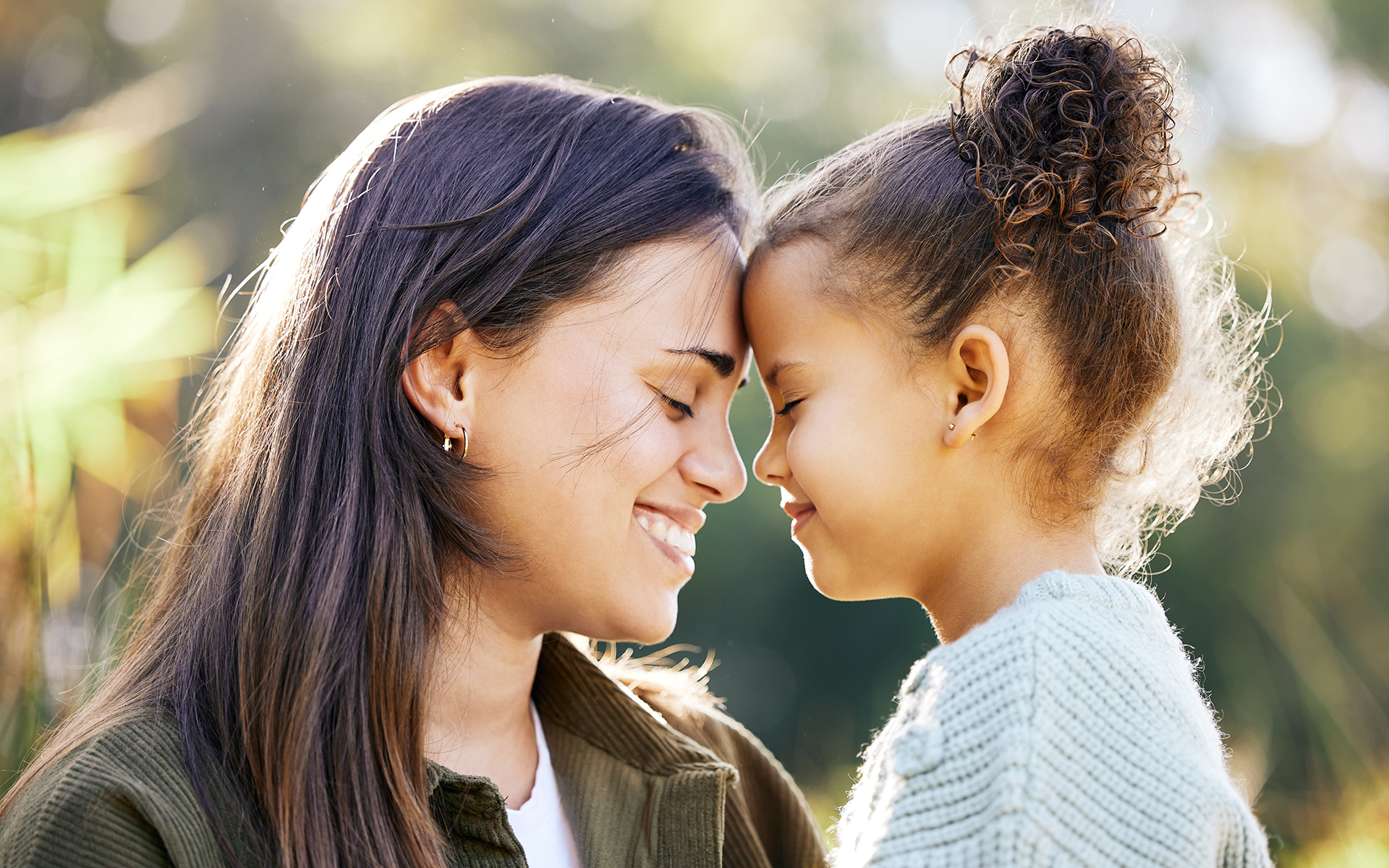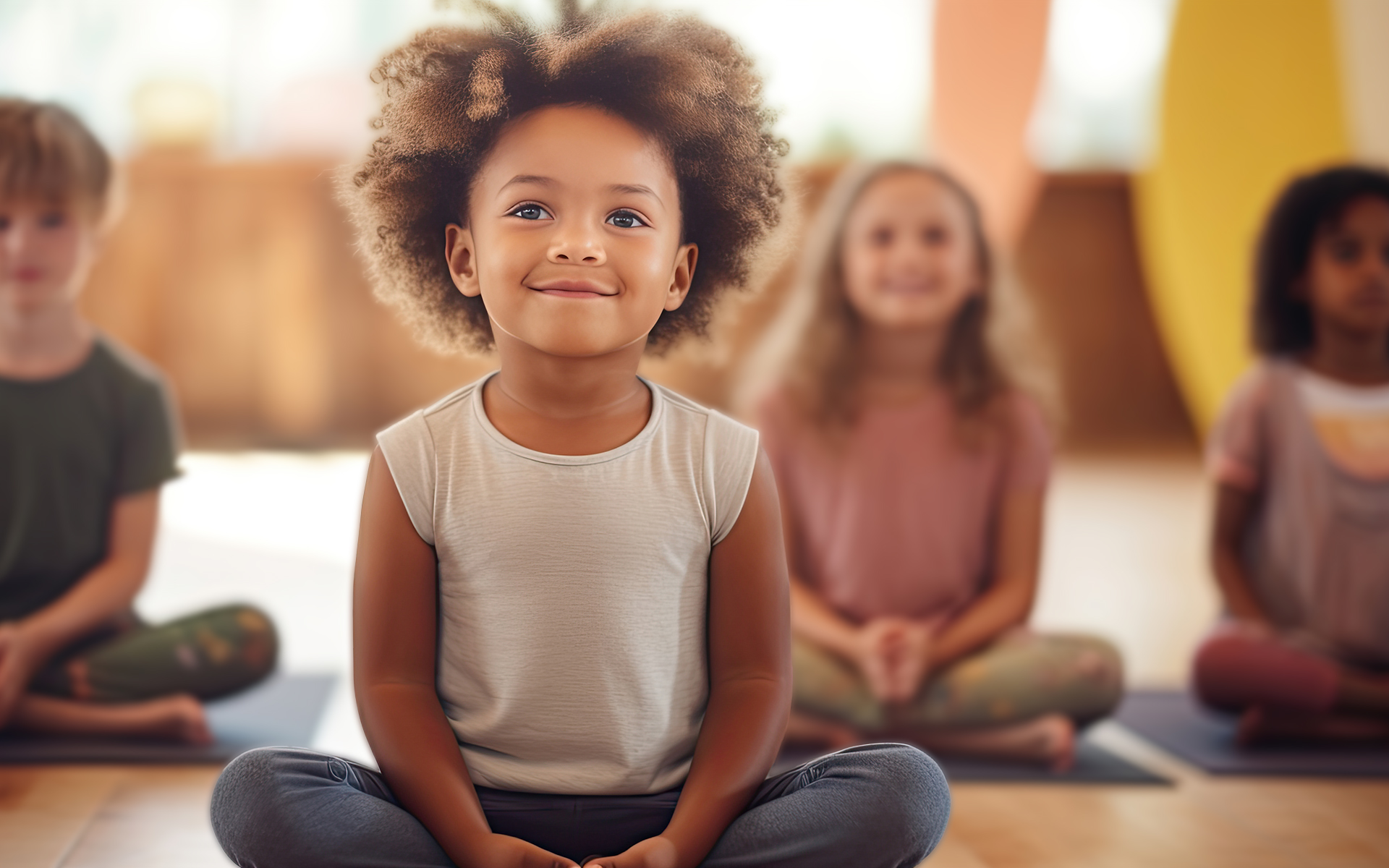When Kara-Lee’s oldest nephews were really young, they enjoyed practicing mindful movement, eating, listening, and gratitude practices with her. She thought they had outgrown it forever as they got older and they stopped. Now that they are both in their early 20’s, they have regular practices of their own. This is a reminder to all of us that we are planting seeds that can grow and can last over time. Whether you are sharing mindfulness practices with kids at school, like we do at Space Between, in after-school programs, or at home, these practices have ripple effects that can impact the whole community.
5 Ways to Practice Mindfulness With Your Family
1. Give Yourself Grace
We are managing a myriad of stressors, like emerging from life in a pandemic, social and political unrest, and job and housing instability, to name a few. To expect ourselves to manage and perform perfectly is unrealistic and unfair. Understand that we are all doing the best we can!
2. Rhythm and Repetition
Rather than doing a mindfulness practice once a week for 30 minutes, try doing a mindfulness practice four times a week for 2–5 minutes per day. Consistency over duration is key to building and maintaining a mindfulness practice.
3. Build Mindfulness into Your Existing Routine
Include mindfulness in the family calendar and take turns guiding practices or suggest places to incorporate them into routines that are already in place. Some kids love to create their own practices! This enforces their sense of agency and empowerment. Here’s an example of a practice led by one of our students, fourth grader Alahn.
Here are some ideas for how to build a mindfulness practice into an existing family routine:
- Mindful teeth brushing: Notice the sensation of the brush against your teeth, the toothpaste foam, water rinsing your mouth, etc.
- Dinner time conversation: Ask about roses and thorns (roses are something that happened during the day that you liked, a thorn is something that was challenging).
- Mindful eating during a meal: Use all of your senses, slow down to look at your food, showing gratitude for where the food comes from (a tree, plant, people that grew and harvested the food), smell it, chew slowly and notice the color, texture, and temperature.
- Two minutes count: Practices don’t have to be long. One parent was lamenting that they only had time for a 24-second dance party with their children, but that 24-seconds counts, too!
4. The 10 Things Practice
In this moment, what I know for sure is: This is a practice that is helpful during times of uncertainty. Remembering what we do know can be very grounding and shifts our focus. You can try this practice by listing 10 things that you know for sure on a piece of paper.
5. The 3-2-1 Orienting Practice
3–2–1 is a practice using our senses that brings us into the here and now and helps us reduce stress. It helps us let go of future worries or past regrets.
- Find 3 things you can see
- Listen to 2 things you hear
- Notice 1 thing that you can feel
A few times we have been completely surprised when a student shares how they have used mindfulness in their everyday life. One third grader noticed how much better her ultimate frisbee game was when she used her mindfulness tools on the field. In a student survey, a first grader proclaimed how much he loves mindfulness and how it has decreased his anger at home. We thought this particular student wasn’t interested at all while we were in class. This was such a pleasant surprise. These stories bring us so much joy and hope for the future.
The bottom line: find a practice that works for you.
This article was adapted from one originally published on Medium.com by foundry10 on August 30, 2021. You can read it here. Republished with permission.







